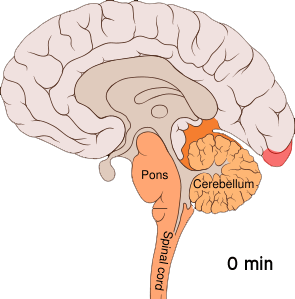Migraine
Migraine is a genetically influenced neurological disorder characterised by recurrent moderate to severe headaches. These headaches are typically unilateral and associated with nausea, and sensitivity to light, sound, and smell.
Onset usually occurs around puberty, with a higher prevalence in women, and a significant impact during middle age.
Signs and Symptoms
Migraine attacks are divided into four phases: prodrome, aura, pain, and postdrome. Not all individuals experience every phase.
Prodrome: Occurs hours or days before the headache, presenting symptoms such as mood changes, fatigue, food cravings, and neck stiffness.
Aura: A transient focal neurological phenomenon preceding the headache, lasting less than 60 minutes. Symptoms include visual disturbances like scintillating scotomas, sensory changes, and motor symptoms.


Pain: Characteristically unilateral, throbbing, and aggravated by physical activity. Accompanied by nausea, vomiting, and sensitivity to light and sound.
The headache typically lasts 4-72 hours in adults.
Postdrome: Following the headache, individuals may experience fatigue, cognitive difficulties, mood changes, and residual head pain.
Causes and Pathophysiology
The exact cause of migraines is unknown, but they are believed to result from a combination of genetic and environmental factors. The condition is related to abnormalities in nerve cell excitation and inhibition in the brain.
Theories have evolved from vascular origins to now focusing on neuronal impairments and cortical spreading depression.

Diagnosis
Diagnosis is clinical, based on the patient’s history and symptoms, often following the "5, 4, 3, 2, 1 criteria":
- Five or more attacks (two if with aura)
- Four hours to three days in duration
- Two or more of the following: unilateral location, pulsating quality, moderate/severe pain, aggravation by physical activity
- One or more of the following: nausea/vomiting, photophobia, phonophobia
Neuroimaging is reserved for atypical cases to rule out other causes.
Treatment
Treatment strategies include acute and preventive measures. For acute attacks, over-the-counter analgesics like ibuprofen and paracetamol are first-line treatments.
Triptans and ergotamines are used for refractory cases. Preventive treatment is indicated for individuals with frequent attacks and includes medications such as propranolol, topiramate, and amitriptyline.
Management
Managing migraine involves lifestyle modifications, trigger avoidance, and pharmacological treatments. Non-pharmacological approaches like regular sleep, dietary adjustments, and aerobic exercise can also be beneficial.
Education on managing triggers and adherence to treatment plans is very important for reducing the frequency and severity of attacks.
Epidemiology
Migraine affects approximately 15% of the global population, with a higher prevalence in women. It is one of the most disabling neurological conditions, significantly impacting the quality of life and productivity.

History
Historical references to migraine-like symptoms date back to ancient Egypt around 1500 BCE. The term "migraine" originates from the Greek word "hemikrania," meaning "half of the skull." Significant advancements in understanding and treatment began in the 19th and 20th centuries.

Self-assessment MCQs (single best answer)
Which of the following is the most common symptom associated with a migraine headache?
What is the typical duration of a migraine headache in adults?
Which phase of a migraine attack involves transient neurological symptoms such as visual disturbances?
Which of the following medications is commonly used as a preventive treatment for migraines?
What is the term for a migraine attack that lasts longer than 72 hours?
Which of the following is a recognised trigger for migraines?
Which of the following phases of a migraine attack is characterised by symptoms like mood changes and food cravings?
Which visual phenomenon is commonly associated with migraine aura?
Which of the following best describes the genetic contribution to the likelihood of developing migraines?
Which diagnostic criterion is required for the diagnosis of migraine without aura according to the "5, 4, 3, 2, 1 criteria"?
Dentaljuce
Dentaljuce provides Enhanced Continuing Professional Development (CPD) with GDC-approved Certificates for dental professionals worldwide.
Founded in 2009 by the award-winning Masters team from the School of Dentistry at the University of Birmingham, Dentaljuce has established itself as the leading platform for online CPD.
With over 100 high-quality online courses available for a single annual membership fee, Dentaljuce offers comprehensive e-learning designed for busy dental professionals.
The courses cover a complete range of topics, from clinical skills to patient communication, and are suitable for dentists, nurses, hygienists, therapists, students, and practice managers.
Dentaljuce features Dr. Aiden, a dentally trained AI-powered personal tutor available 24/7 to assist with queries and provide guidance through complex topics, enhancing the learning experience.
Check out our range of courses, or sign up now!


